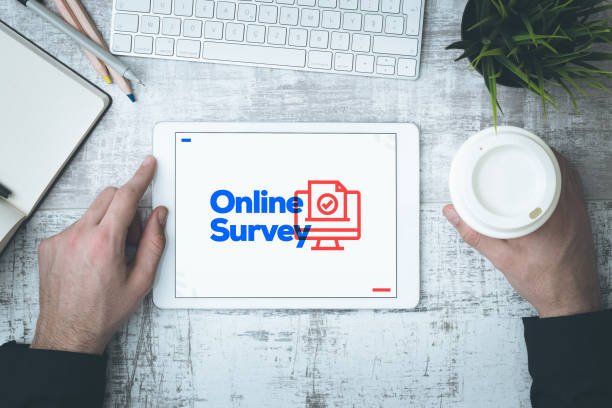Creating the perfect questionnaire has been a journey filled with ups and downs, learning curves, and countless iterations. As someone deeply engrossed in the world of survey panels, I’ve learned that the quality of your questionnaire can significantly impact the quality of the data you collect. In this article, I’m excited to share the techniques I’ve honed down the years, from shaping initial concepts to reaching completion, ensuring your questionnaire stands out and provides actionable insights.
The Importance of a Well-Designed Questionnaire
Before diving into techniques, let’s talk about why this matters. A well-structured questionnaire doesn’t just ask questions; it guides respondents through a logical flow that makes sense to them. Research indicates that a well-designed questionnaire can increase response rates by up to 20%. This is crucial, especially in our fast-paced digital era where attention spans are short.
Key Goals of a Questionnaire
Here are some of the goals every questionnaire should strive to achieve:
- Clarity: Questions must be clear and easy to understand.
- Relevance: Each question should serve a purpose and relate to the research objectives.
- Engagement: Keeping respondents interested maintains their focus.
- Actionable Insights: Ultimately, the data collected should lead to insights that can inform decisions.
Step 1: Defining Your Purpose
Understanding your research goals is the first step. Ask yourself: What information do I want to collect? What decisions will be based on this data? For example, if I’m conducting market research for a product launch, I may want to explore consumer preferences, pricing sensitivity, and brand awareness.
Example Purpose Statement
Let’s say I’m interested in launching a new energy drink. My purpose statement might look like this:
“To understand consumer preferences and potential barriers to purchase for a new energy drink targeted at college students.”
Step 2: Designing the Questionnaire
Once the purpose is clear, the next step is designing the questionnaire. Here are my tried-and-true techniques:
Question Types: Open-Ended vs. Closed-Ended
- Open-Ended Questions allow for detailed feedback but can be harder to analyze.
- Closed-Ended Questions are easier to quantify, making analysis more straightforward.
I prefer a balanced mix. For instance, I might ask, “What do you currently drink for energy?” (open-ended) followed by, “On a scale of 1-5, how likely are you to try a new energy drink?” (closed-ended).
Crafting Questions
Writing questions is an art. Here are some tips:
- Be Specific: Vague questions lead to vague answers. Instead of “Do you like to exercise?” try “How many days a week do you engage in physical exercise?”
- Avoid Leading Questions: Questions should be neutral. Rather than asking, “Don’t you think our product is great?” opt for, “What are your thoughts on our product?”
- Limit Jargon: Use language that suits your audience.
Example Questions Table
Here’s a table comparing different types of questions I would include in the energy drink questionnaire:
| Question Type | Example | Purpose |
|---|---|---|
| Open-Ended | “Describe the last energy drink you tried.” | Gather qualitative insights |
| Closed-Ended | “Do you consume energy drinks? (Yes/No)” | Quantify behavior |
| Likert Scale | “Rate your agreement: ‘Energy drinks help me stay awake.’” (1-Strongly Disagree to 5-Strongly Agree) | Measure attitudes |
| Multiple Choice | “Which flavor do you prefer?” (Citrus, Berry, Cola, Other) | Identify preferences |
Step 3: Pilot Testing Your Questionnaire
Once the questionnaire is designed, it’s crucial to pilot test it with a smaller group. This helps identify questions that may confuse respondents, plus gauging the average time it takes to complete. Feedback from pilot tests can highlight areas needing adjustments.
Real-World Example
In my own pilot testing for the energy drink questionnaire, several participants found the phrase “energy boost” unclear. This prompted me to ask, “What do you look for when seeking an energy boost?” instead. Small changes like this can lead to more accurate responses.
Step 4: Distribution Channels
With the questionnaire finalized, the next step is distribution. Here are some options I’ve explored:
- Online Panels: Platforms like SurveyMonkey or Qualtrics can be useful.
- Social Media: Posting the questionnaire on Instagram or Facebook reaches a wider audience.
- Email Surveys: Directing surveys to existing customers can yield quality data.
Pros and Cons Table of Distribution Channels
| Channel | Pros | Cons |
|---|---|---|
| Online Panels | Targeted audience, quick responses | May require payment |
| Social Media | Wide reach, engages younger demographics | Can lead to unqualified respondents |
| Email Surveys | Direct engagement, reliable responses | Limited to email list quality |
Step 5: Analyzing Data
After gathering data, the next phase is analysis. It’s essential to identify patterns and insights that align with the goals set at the start.
Tools for Analysis
- Excel: Useful for basic data analysis; you can create charts or tables.
- SPSS: A more advanced tool that allows for complex statistical analysis.
Applying Feedback
Data analysis shouldn’t stop at just collecting numbers. Real success comes from applying the insights. For instance, if 75% of respondents state they prefer a certain flavor, focusing on that could lead to a more successful product launch.
User Feedback: What They Think
To gauge the effectiveness of the process, I often solicit feedback from respondents regarding their experience with the questionnaire. Here are some insights collected after my latest survey launch:
- “The questions were easy to understand, and I felt my opinions mattered.” – Jessica, 21, College Student
- “I appreciated the variety of question types. It kept me engaged.” – Mark, 24, Fitness Enthusiast
- “I found a couple of questions a bit vague. It might help to simplify them further.” – Lisa, 22, Marketing Intern
Incorporating user feedback leads to an improved questionnaire structure for future surveys.
Conclusion: Continuous Improvement
Crafting the perfect questionnaire is a continuous learning process. By defining your purpose, employing various question types, conducting thorough pilot tests, selecting the right distribution channels, and analyzing data effectively, you can enhance the quality of your research.
Each survey presents an opportunity to refine your technique and adapt to the ever-changing landscape of consumer preferences. Embrace the journey, learn from your results, and keep iterating. Happy surveying!
In the end, remember that building a great questionnaire doesn’t happen overnight. It requires feedback, adaptation, and a commitment to listening to your respondents. With each step, you’ll inch closer to creating that perfect questionnaire that engages your audience and yields actionable insights.




